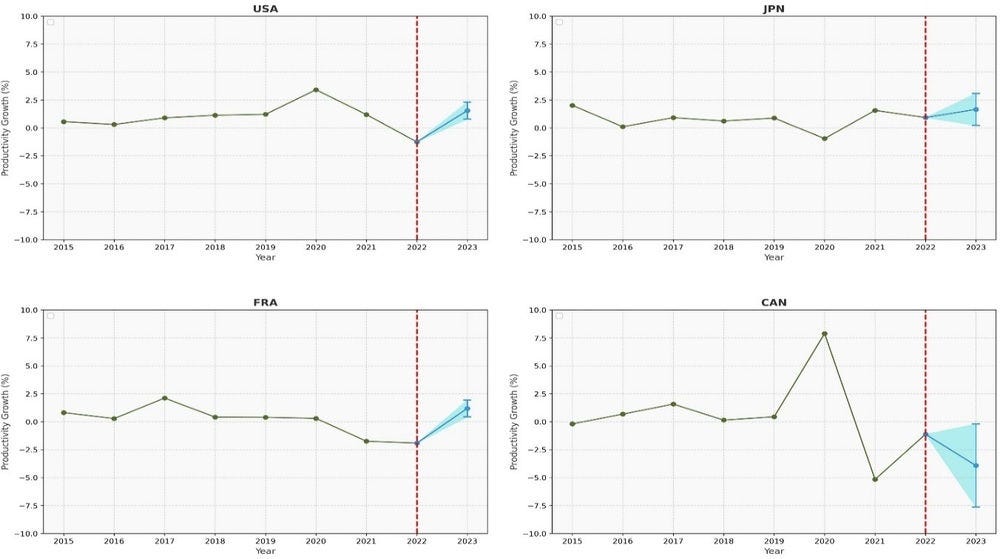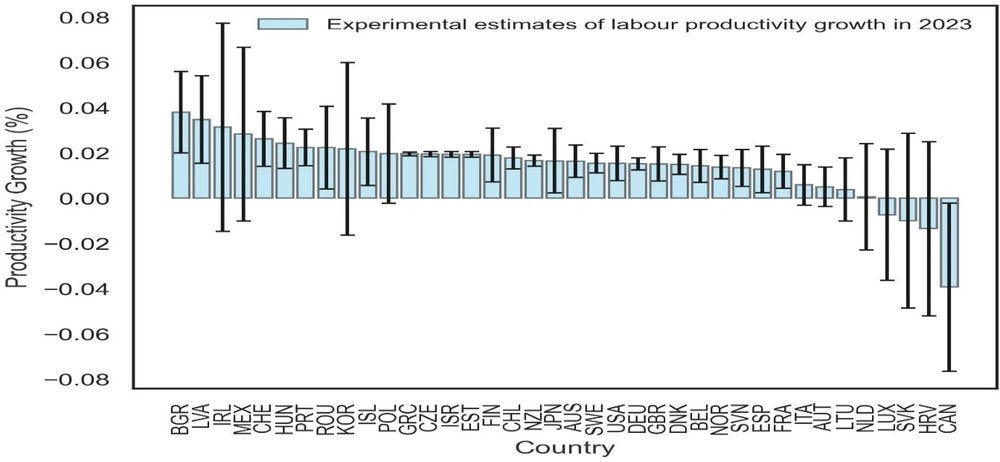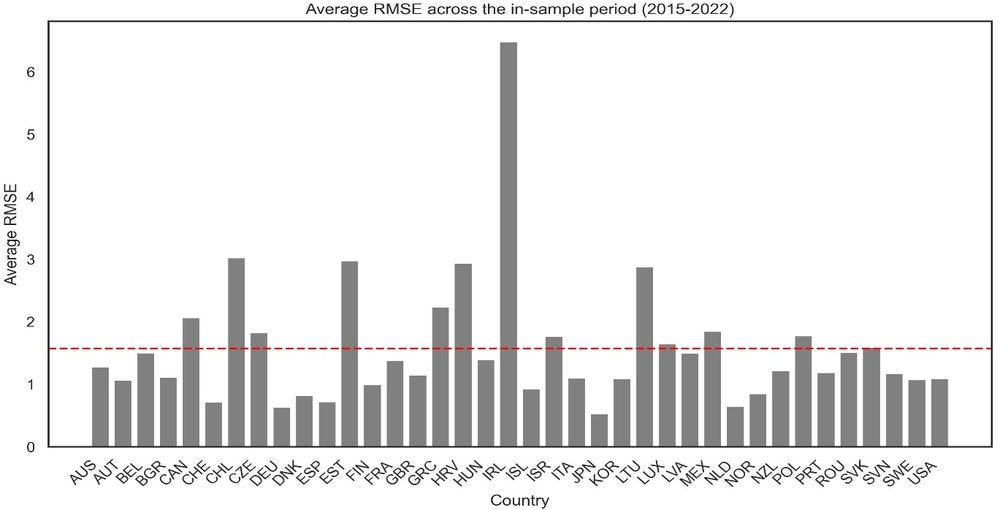Developments in productivity have become more and more uncertain, as several shocks, including the COVID shock, the energy crisis, and more recently heightened geo-political tensions hit economies, with potential long-term scarring effects for some of them (OECD/APO, 2022[1]). This has added to long-term trends such as population ageing, declining competition and stalling globalisation, which can also hamper productivity developments. At the same time, digitalisation, Artificial Intelligence and the transition to a green economy offer opportunities to revive productivity growth (OECD, 2023[2]). Getting preliminary insights on most recent developments in productivity growth is thus useful to inform policymaking, identify policy needs or monitor the effects of policies.
Labour productivity statistics are usually released with a lag of one or two years, posing challenges for timely analysis and policy design. This chapter provides information on labour productivity (as measured by GDP per hours worked) developments in 2023 relying on experimental estimates for 38 OECD countries. Estimates are derived using a range of machine learning models, of varying accuracy across countries and should be interpreted with caution, especially for countries where confidence bands around estimates are large.






